After 3.5 days of sorting through above ground and below ground samples, the team starts to make mistakes. And not the “I’m tired and I spelled Betula nana wrong,” more like “I’ve been looking at roots for 2 days and I STILL can’t tell if this root is a Betula nana or a Salix pulchra.” It happens.
Scope Work
After the A-Team does the best job they can to sort the roots into their species category, the B-Team comes in and cleans up their messes. And by “cleaning up” I mean looking at all samples under a microscope to see if the species identification is correct. Just like other living things, each species of plant has different traits, some of which are visible to botantists (plant biologists) and especially mycologists (fungal biologists). When you throw some soil scientists in then you really have a party…ok, just kidding, but they do know their stuff (and they really are fun…gals…). Oops. Sorry for the dad joke.
 What species is this??? Time for specialists to step in.
What species is this??? Time for specialists to step in.
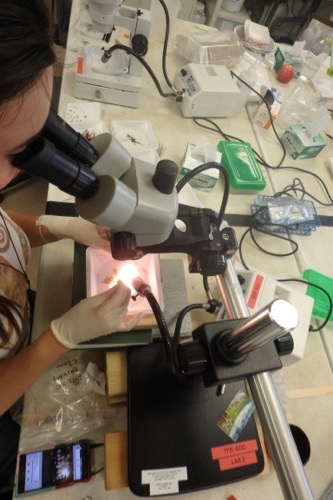 High power microscopes help to differentiate species of plants by root.
High power microscopes help to differentiate species of plants by root.
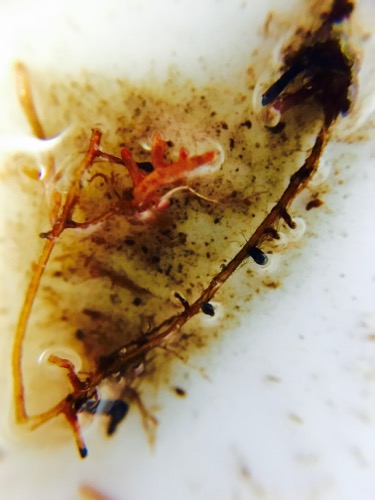 A fine root magnified to show the fungus growing on the root itself.
A fine root magnified to show the fungus growing on the root itself.
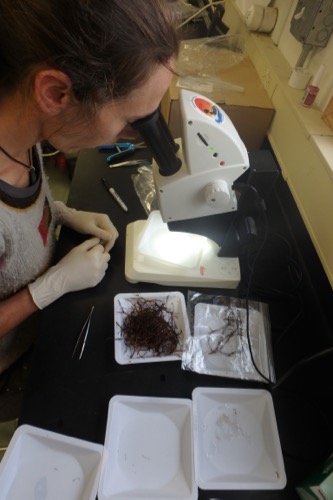 Dr. Genet has had enough root identification for the day.
Dr. Genet has had enough root identification for the day.
Root Scans
Once the roots have been identified by several sets of eyes (the last eyes being those on the microscope), its time for the roots to be scanned and sent out for further analysis. Each species of roots from each plot (Betula nana from Control Block 3, for example) is weighed and divided into 2 categories (3 if there is a lot of extra root…the 3rd category is just “extra”): isotope analysis and DNA analysis.
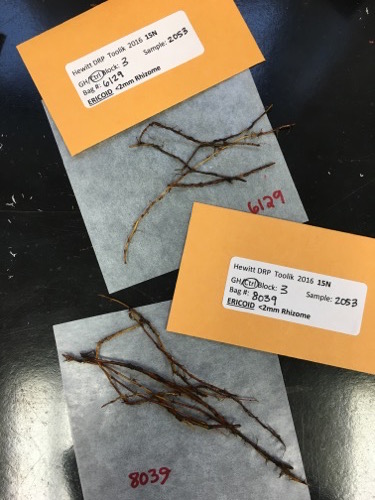 The sample is given a unique number to designate where it is going for analysis.
The sample is given a unique number to designate where it is going for analysis.
Isotope Analysis
The whole point of this experiment is to see if tundra plants can access Nitrogen that exists at the boundary between the permafrost and the active layer. Remember, as the Arctic warms and the permafrost thaws, the Nitrogen stored in “Earth’s Freezer” will be available for plants to use (need a refresher on this topic? Click here). One of the most critical parts of this whole project is to make sure that samples are sorted, labeled, scanned on a fancy root scanning machine and then sent to an outside lab for isotope analysis (again, need a refresher on this particular bit of science? Click here).
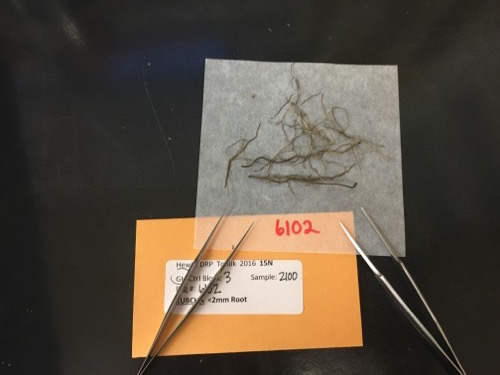 This tangle of Ericoid roots must be placed on the scanner without any overlaps.
This tangle of Ericoid roots must be placed on the scanner without any overlaps.
 Each tiny root is painstakingly placed on the scanner to create a digital file and measure the overall length.
Each tiny root is painstakingly placed on the scanner to create a digital file and measure the overall length.
DNA Analysis
Even with the most highly trained specialists, there can still be a degree of uncertainty identifying root species by sight. To make sure that doesn’t happen (and honestly, this team generally has an accuracy rate of 90% or higher), a section of each root sample is placed into a tube with super saturated saline (salt) solution and sent to Dr. Lee Taylor’s lab for DNA sequencing to identify the species using genetics.
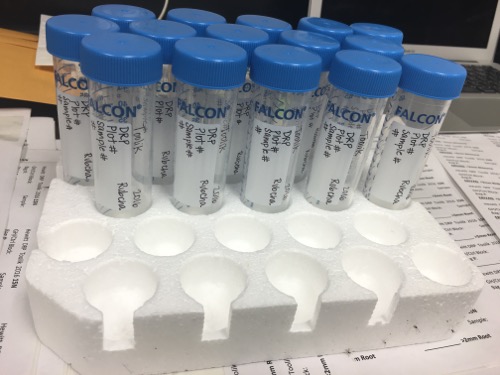 These tubes will be filled with a root sample, saline solution, and shipped off for genetic analysis.
These tubes will be filled with a root sample, saline solution, and shipped off for genetic analysis.
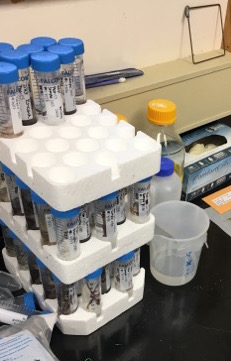 Filled Falcon tubes, ready to ship off for DNA analysis.
Filled Falcon tubes, ready to ship off for DNA analysis.
There is actually a more important reason for sending these samples off to Dr. Taylor’s lab… MYCORRHIZAE. But yeah, you’ll have to wait for the next journal for that one…


Comments